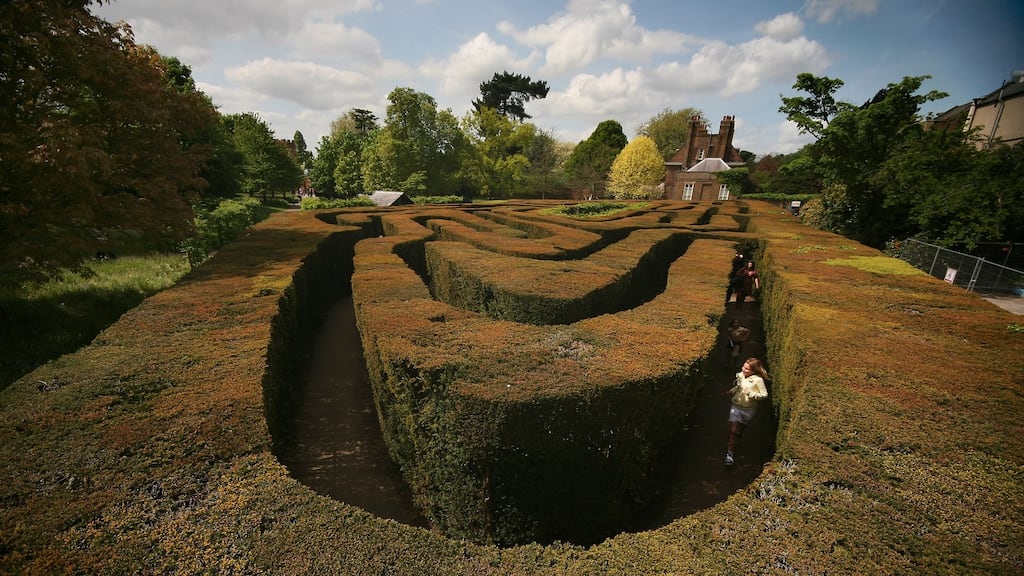Remember that scene in the Stanley Kubrick movie The Shining, where Jack Nicholson, in his role as the crazed author/ psychotic hotel caretaker, dementedly pursues his young son into a gloomy garden maze in the middle of an icy snowstorm, only to slowly freeze to death?
For years, this cult horror movie coloured my attitude to garden mazes (surely I’m not the only one), until I slowly began to appreciate their long history and complex designs.
By their very nature, mazes are designed to surprise, confuse, puzzle and generally befuddle. In The Shining, the movie's sinister garden maze is made out of tall, twisting evergreen garden hedges that completely disorientate Nicholson (and the viewer), reminding one of the monstrous minotaur's labyrinth in Greek mythology.
Other famously confusing hedge mazes include England’s Hampton Court maze, which dates from the late 17th century. Originally planted as a six-metre tall deciduous hedge using hornbeam, but later replaced with evergreen yew, it is one of the oldest surviving mazes in Europe. Mazes like this one were a very fashionable feature of large gardens in the 16th and 17th centuries, until the influential English landscape designer Capability Brown popularised a more naturalistic style that led to their destruction.
One of the few to survive the whims of garden fashion, the Hampton Court specimen is what is known as a multicursal or puzzle maze, meaning that it contains many confusing twists, branches, turns and dead ends, unlike a unicursal or single path maze, where the path gradually wends its way to a central point.
Other famous English puzzle mazes include the yew maze at Longleat in Wiltshire. Supposedly the longest hedge maze in the world, it takes six gardeners over a month to trim it, a process that takes place twice a year. Ireland is also home to one of the world’s largest permanent hedge mazes, which is to be found in Castlewellan Forest Park in Co Down.
Made up of 6,000 yew trees and with more than two miles of pathways, it was planted at the beginning of this century.
However not all garden mazes make quite such permanent evergreen features. Far more temporary installations have been designed using thousands of sunflower plants, such as the maze created in the Belgian town of Mons last year by French artist Fanny Bouyagui.
Other have been made by mass-planting tall grasses, bulbs or perennials or simply by cutting paths into grain fields or long grass. So the next time that you take out the lawnmower, why not consider creating your very own mini-maze?
For some amazing (sorry, I just couldn’t resist it) design inspiration, see labyrinthos. net


















